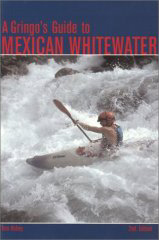
Rio Valles, San Luis Potosi, Mexico
Length: ~ 2.5 miles
Low to medium flows
Torture Factor: Way too low for such a remarkable run.
After arriving in and getting the hell out of Ciudad Mexico ( Mexico City ) with all of our boating gear, Jeff Hazboun, Casey Sande, Chris Gabrielli, Nadia Almuti, and I headed north to the Rio Valles. The Valles is in the eastern ( and only jungle-covered region ) of the state of San Luis Potosi.
There are two renowned whitewater sections on the Rio Valles: Cascada Micos, a super fun class four waterfall run, and El Salto, a class four travertine creek, located approximately eighteen miles upstream of Micos. While neither of these runs are very technical, they provide a great opportunity to get your feet wet in a new country.
Cascada Micos has seven runnable waterfalls, each formed by episodic deposition of calcite from the mineral-laden water. The accumulation of these minerals results in the development of huge travertine features, typified by shield and dam formations. The calcite in the water is also responsible for the striking turquoise blue color typical to Agua Azul in Chiapas and other limestone-rich drainages.
The Micos offers a novel way to scout drops: you literally by paddle up to the lip and step out of your boat and pick a line. The travertine has amazing purchase, unlike anything our conglomeration of Appalachians-turned-Pacific Northwest boaters had experienced.
Overhead view of the Minas Viejas showing the unusual beauty of the Travertine ( Limestone ) ledges typical in this part of Mexico.
This creek is on the way to the El Salto section of the Rio Valles.
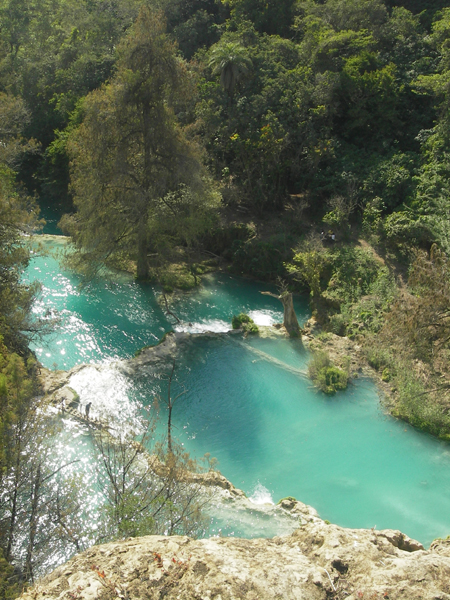
Nico Zegre at the put-in for the Cascada Micos.

The first drop below the big falls is a sloping calcite shield, dropping around fifteen feet total. This falls is a great place to practice super-late boofs and perfect the Oregon tuck! On a later run, Jeff and Chris paddled through the curtain and found a rad cave ( at these flows! ) behind the drop.
Jeff and Chris running the first drop rodeo style..
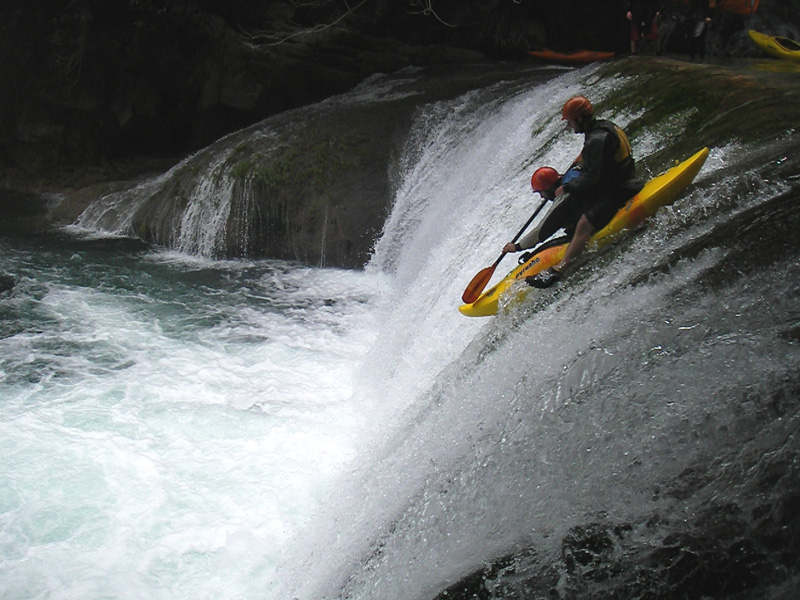
Nadia in the cave behind the first waterfall.
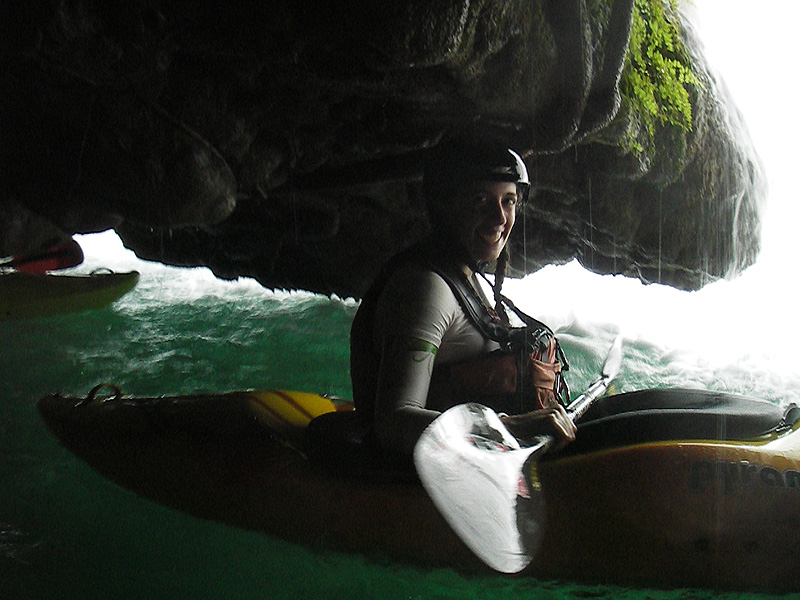
Jeff lining up on the second drop.
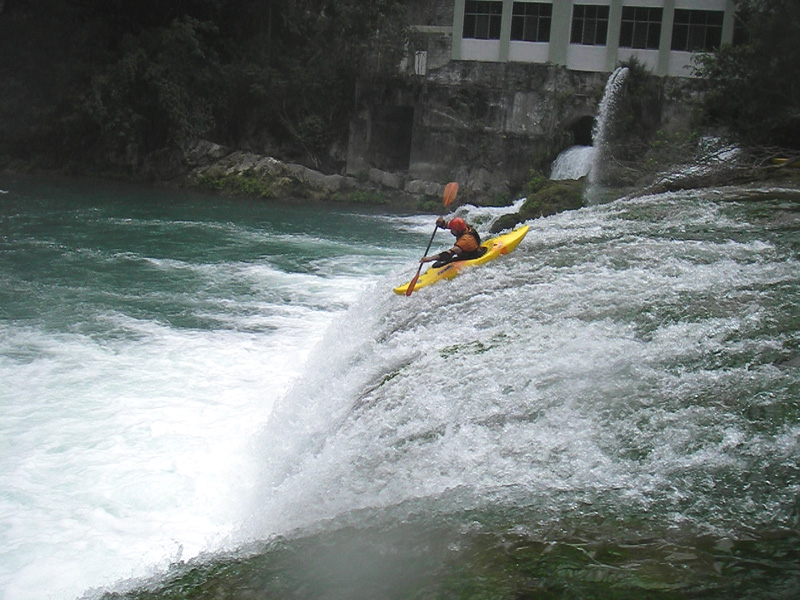
Casey below the second drop, with the seventy footer visible far upstream.
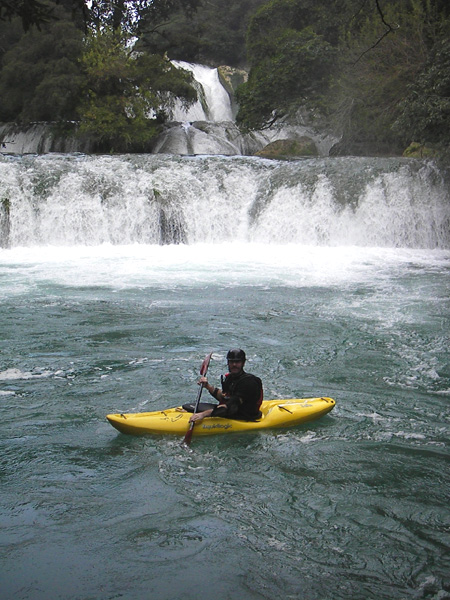
A downstream view of Serpentine, with Jeff completing the S-turn Luge move, followed by Casey.
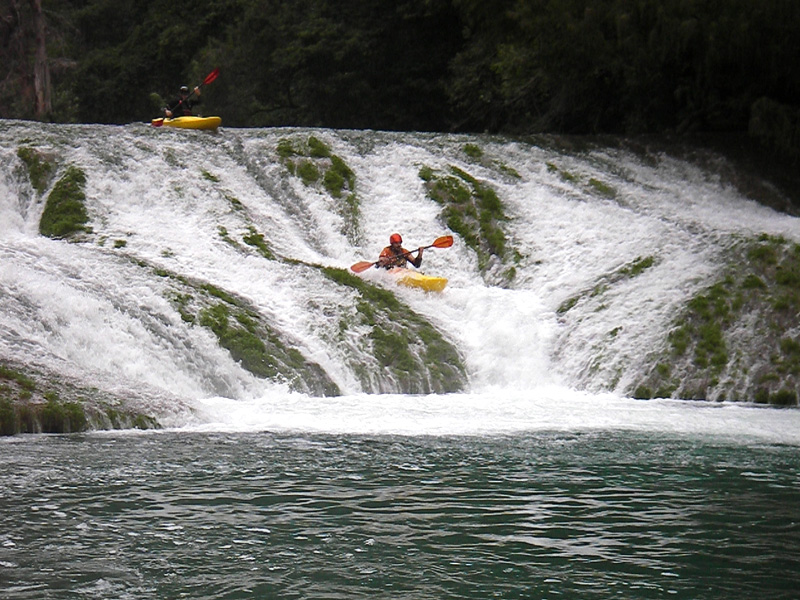
Casey looking tough on Serpentine.
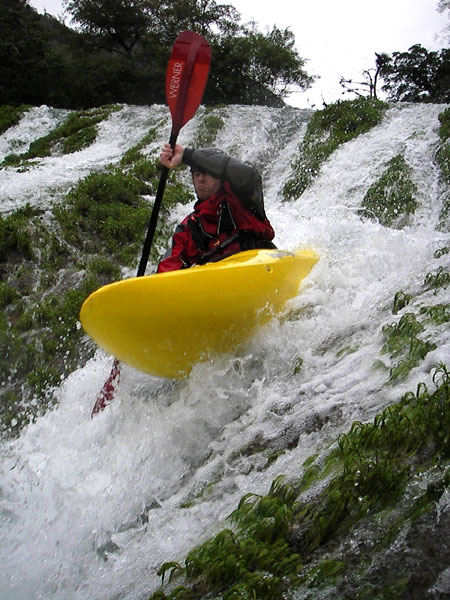
Fortunately, I only sprained my ankle and sitting in my boat was the most comfortable position after that. Jeff ended up probing a left line ( a sloping to vertical drop about eighteen feet ) which became the preferred line for our group. There is an enormous cave behind this drop as well, and you can get behind the curtain from a river right cave entrance.
Jeff running the far left line on the fourth drop ( In the PNW, those arms would be under a dry suit! )
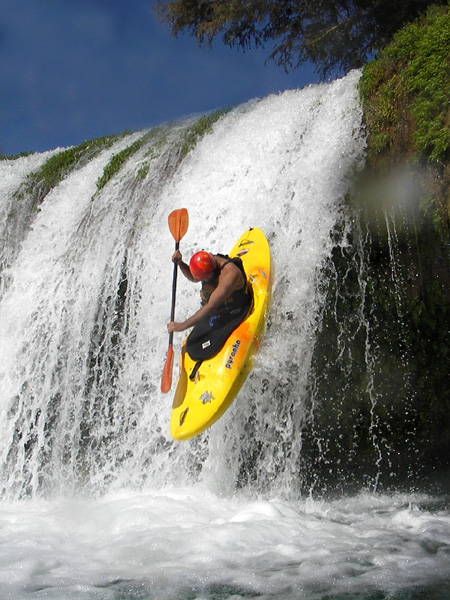
At the base of this drop is the Mexican equivalent to Wall Drug, SD, a tourist trap epicenter that can serve as the first takeout. Local guides paddle tourists to the base of the last drop. From this point on, the river meanders through the forest, creating mellow drops with striking scenery. Below the tourist area is the last real drop, where the water splits around a small travertine island. The right line is a twisting boil, while the left side requires a strong right boof to miss a flat boulder pin at the base of the five foot drop.
We paddled the Micos an additional 1.5 miles down to a creekside kayakers camp run by Huasteca Adventure. The going rate was fifty pesos a day for creek-side camping and takeout, security, warm showers, sweat lodge, and nighttime access to the river.
We returned to the Rio Valles at the end of our month of paddling around Mexico. Before taking a few more laps down the regular Micos run, Jeff, Chris, Casey, Phil LaMarch ( NY ) and I probed the five drops above the seventy footer. Four of the drops were stacked on top on one another, with a nasty hole above the last drop. Directly below this hole, most of the water flushed into an uncut boulder on river left. There is certainly a move there, which would require driving hard left to hit the slide directly above the undercut. However, a missed line, lack of boof, or other mishap could end with taking one’s head off at the shelf. The drops above the big drop are worth it if you are feeling dialed, but too much effort to walk around if you are feeling less than 100%.

For more info, check out the book that got us there: Gringo's Guide to Mexican Whitewater by Tom Robey. This book is available on Amazon.com.
Tom also has a discussion board at: http://www.mexicanwhitewater.org/
